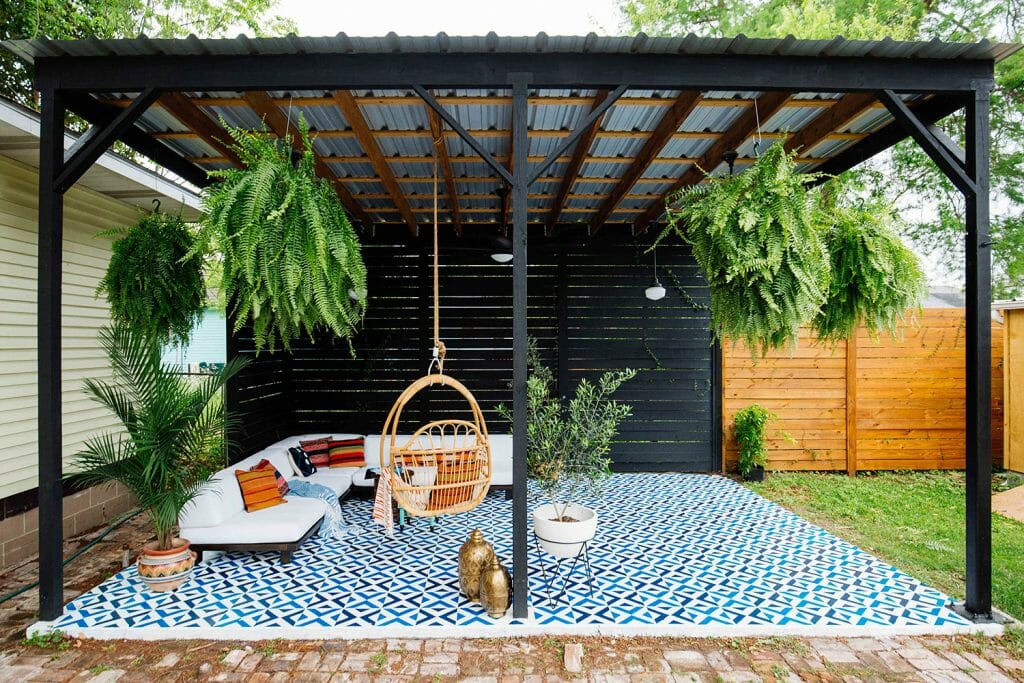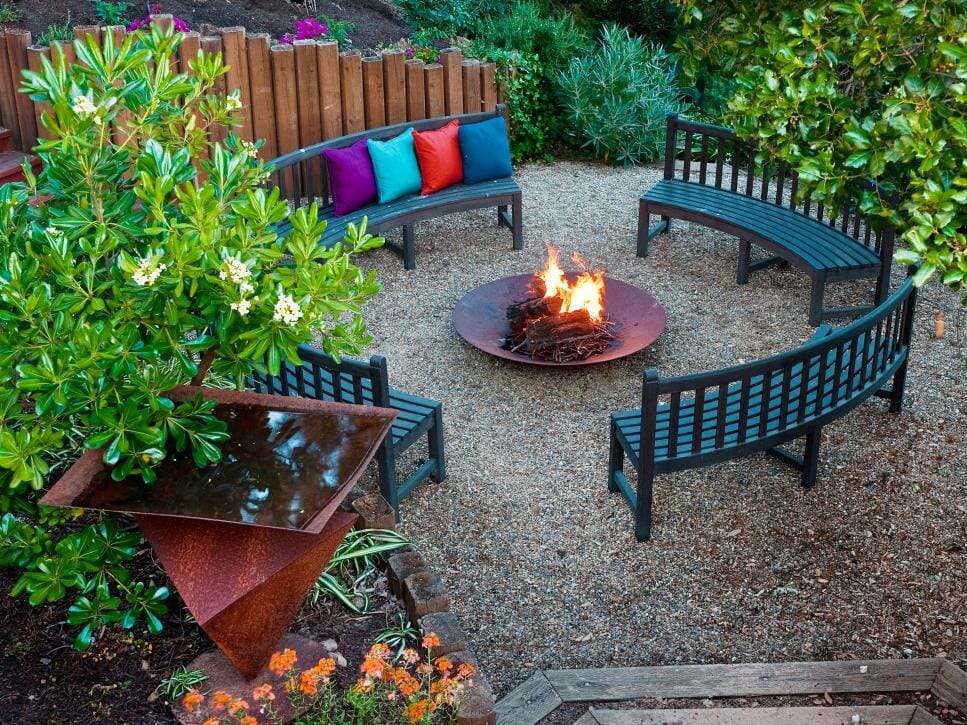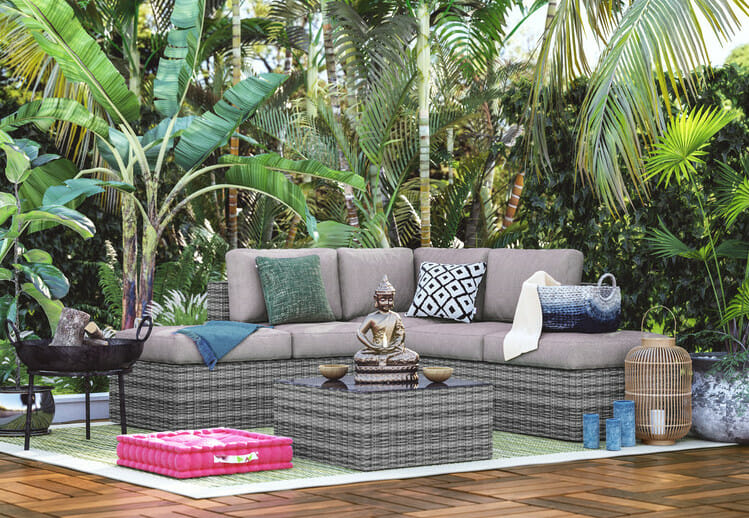As outdoor design essentials for a holistic lifestyle take center stage, this opening passage beckons readers into a world crafted with good knowledge, ensuring a reading experience that is both absorbing and distinctly original. From the importance of outdoor design to sustainable landscaping practices, this guide covers all aspects of creating a harmonious outdoor space for a balanced life.
Importance of Outdoor Design

Outdoor design plays a crucial role in promoting a holistic lifestyle by creating spaces that connect individuals with nature, fostering a sense of well-being and tranquility. Well-designed outdoor areas can significantly enhance daily life by providing opportunities for relaxation, physical activity, social interactions, and overall rejuvenation.
Connection with Nature
Outdoor spaces designed to incorporate natural elements such as plants, water features, and natural materials can help individuals establish a deeper connection with the environment. This connection can lead to reduced stress levels, improved mood, and enhanced creativity.
Physical Health Benefits
A well-designed outdoor area can encourage physical activity such as walking, gardening, or yoga, promoting a healthier lifestyle and reducing the risk of various health issues. Access to fresh air and sunlight in outdoor spaces can also boost immune function and overall vitality.
Social Interaction and Community Building
Outdoor design that includes seating areas, gathering spaces, and communal amenities can facilitate social interactions and foster a sense of community among residents or visitors. These interactions contribute to emotional well-being, a sense of belonging, and overall happiness.
Enhanced Living Environment
By creating outdoor spaces that are visually appealing, functional, and sustainable, individuals can enjoy a higher quality of life at home or in public places. Well-designed outdoor areas can serve as extensions of indoor living spaces, offering opportunities for relaxation, entertainment, and personal expression.
Elements of Holistic Outdoor Design

Creating a holistic outdoor space involves incorporating various key elements that work together to promote wellness and harmony. Natural elements such as plants, water features, and sunlight play a crucial role in enhancing the overall ambiance of the outdoor environment.
Additionally, using sustainable materials in outdoor design can contribute to a more eco-friendly and balanced lifestyle.
Role of Plants in Outdoor Design
Plants are not just decorative elements in outdoor spaces; they also provide numerous benefits such as improving air quality, reducing stress, and creating a sense of tranquility. By incorporating a variety of plants in different shapes, sizes, and colors, you can create a diverse and vibrant outdoor oasis.
Importance of Water Features
Water features like fountains, ponds, or waterfalls can add a sense of tranquility and relaxation to your outdoor space. The sound of flowing water can help mask unwanted noise and create a soothing atmosphere for meditation or relaxation. Additionally, water features attract wildlife and contribute to the overall biodiversity of your outdoor area.
Maximizing Sunlight Exposure
Sunlight is essential for plant growth and overall well-being. By strategically placing seating areas, outdoor structures, and plants to maximize sunlight exposure, you can create a warm and inviting outdoor space that promotes relaxation and rejuvenation. Natural light also has mood-boosting benefits and can enhance the overall ambiance of your outdoor environment.
Incorporating Sustainable Materials
Using sustainable materials like reclaimed wood, recycled plastics, or natural stones in your outdoor design can align with a holistic lifestyle by reducing environmental impact and promoting eco-conscious practices. Sustainable materials are durable, environmentally friendly, and can add a unique touch to your outdoor space while contributing to a more balanced and harmonious environment.
Creating Functional Outdoor Spaces
When designing outdoor spaces for relaxation, entertainment, and exercise, it is important to focus on functionality and practicality. Integrating key elements such as seating, lighting, and storage solutions effectively can enhance the overall experience and usability of the space. Additionally, ensuring a seamless flow and connectivity between indoor and outdoor living areas can create a cohesive and harmonious environment for both relaxation and entertainment purposes.
Designing Seating Areas
When creating functional outdoor spaces, consider the type of seating that will best suit the activities you plan to do. For relaxation, comfortable lounge chairs or hammocks can provide a cozy spot to unwind. For entertainment purposes, a dining table with chairs or a built-in bench seating can accommodate guests.
Incorporating versatile seating options that can be easily rearranged based on the occasion is key.
Effective Lighting Solutions
Lighting plays a crucial role in enhancing the ambiance and functionality of outdoor spaces. Utilize a combination of overhead lighting, such as string lights or lanterns, and task lighting, such as spotlights or pathway lights, to create a well-lit environment for evening gatherings.
Consider installing dimmable lights or smart lighting systems for added convenience and control.
Strategic Storage Solutions
Integrating storage solutions into outdoor design can help maintain a clutter-free and organized space. Utilize multi-functional furniture pieces with built-in storage compartments, such as benches or coffee tables. Install outdoor cabinets or sheds to store cushions, gardening tools, or outdoor toys.
Creating designated storage areas ensures easy access to essentials while keeping the outdoor space tidy.
Flow and Connectivity
To establish a seamless connection between indoor and outdoor living spaces, consider using similar design elements, colors, and materials. Create visual pathways, such as stepping stones or garden paths, to guide movement between areas. Incorporate large windows, sliding doors, or outdoor curtains to blur the boundaries and allow natural light to flow indoors.
By enhancing the flow and connectivity, you can create a cohesive living environment that promotes relaxation and enjoyment.
Mindful Outdoor Decor
Creating a mindful outdoor decor is essential for promoting a holistic approach to your outdoor space. By carefully selecting decor elements that inspire tranquility and relaxation, you can enhance your overall well-being.
Choosing Tranquil Decor Elements
When selecting decor elements for your outdoor space, opt for items that evoke a sense of calm and serenity. Consider incorporating elements such as:
- Water features like fountains or ponds to add a soothing sound and visual appeal.
- Natural materials like wood, stone, and bamboo for a grounding and organic feel.
- Soft textiles such as outdoor rugs and throw pillows to create a cozy atmosphere.
Importance of Color Schemes and Textures
The color scheme and textures you choose for your outdoor decor can greatly impact the mood of the space. Consider using earthy tones like greens, blues, and browns to create a sense of harmony and relaxation. Incorporate different textures such as smooth stones, rough wood, and soft fabrics to add depth and visual interest.
Adding Personal Touches
Personalize your outdoor space with decor elements that reflect your personality and interests. Incorporate items like outdoor artwork, sculptures, or plants that hold special meaning to you. By adding personal touches, you can create a space that feels truly unique and inviting.
Sustainable Landscaping Practices
Embracing sustainable landscaping practices is crucial for nurturing a holistic lifestyle that prioritizes harmony with nature. By implementing eco-friendly techniques and mindful choices in your outdoor design, you can reap a multitude of benefits for both yourself and the environment.
Water Conservation
Conserving water is a key aspect of sustainable landscaping. By incorporating practices such as drip irrigation, rainwater harvesting, and smart watering systems, you can significantly reduce water wastage and promote the efficient use of this precious resource.
Native Plant Selection
Choosing native plants for your outdoor spaces not only enhances biodiversity but also minimizes the need for excessive water, pesticides, and fertilizers. Native plants are well-adapted to the local climate and soil conditions, requiring less maintenance and contributing to a healthier ecosystem.
Eco-Friendly Design
Implementing eco-friendly design principles, such as using permeable paving, creating wildlife habitats, and incorporating composting areas, can help reduce your environmental footprint and promote sustainability. These design choices can enhance the natural beauty of your landscape while fostering a more balanced relationship with the surrounding ecosystem.
Last Point

In conclusion, by understanding the elements of holistic outdoor design and incorporating mindful decor choices, individuals can truly transform their outdoor spaces into sanctuaries of relaxation and well-being. Embracing sustainable practices further enhances this experience, fostering a deeper connection with nature and promoting a holistic lifestyle.
Helpful Answers
How can outdoor design promote a holistic lifestyle?
Outdoor design can promote a holistic lifestyle by creating spaces that encourage relaxation, connection with nature, and overall well-being.
What are some key elements of holistic outdoor design?
Key elements include natural elements like plants and water features, sustainable materials, and functional spaces for various activities.
Why is mindful outdoor decor important for a holistic approach?
Mindful decor choices can enhance tranquility and relaxation in outdoor spaces, contributing to a holistic lifestyle focused on well-being.
How does sustainable landscaping benefit a holistic lifestyle?
Sustainable landscaping practices help create a harmonious relationship with nature, promote eco-friendly living, and support overall well-being.






